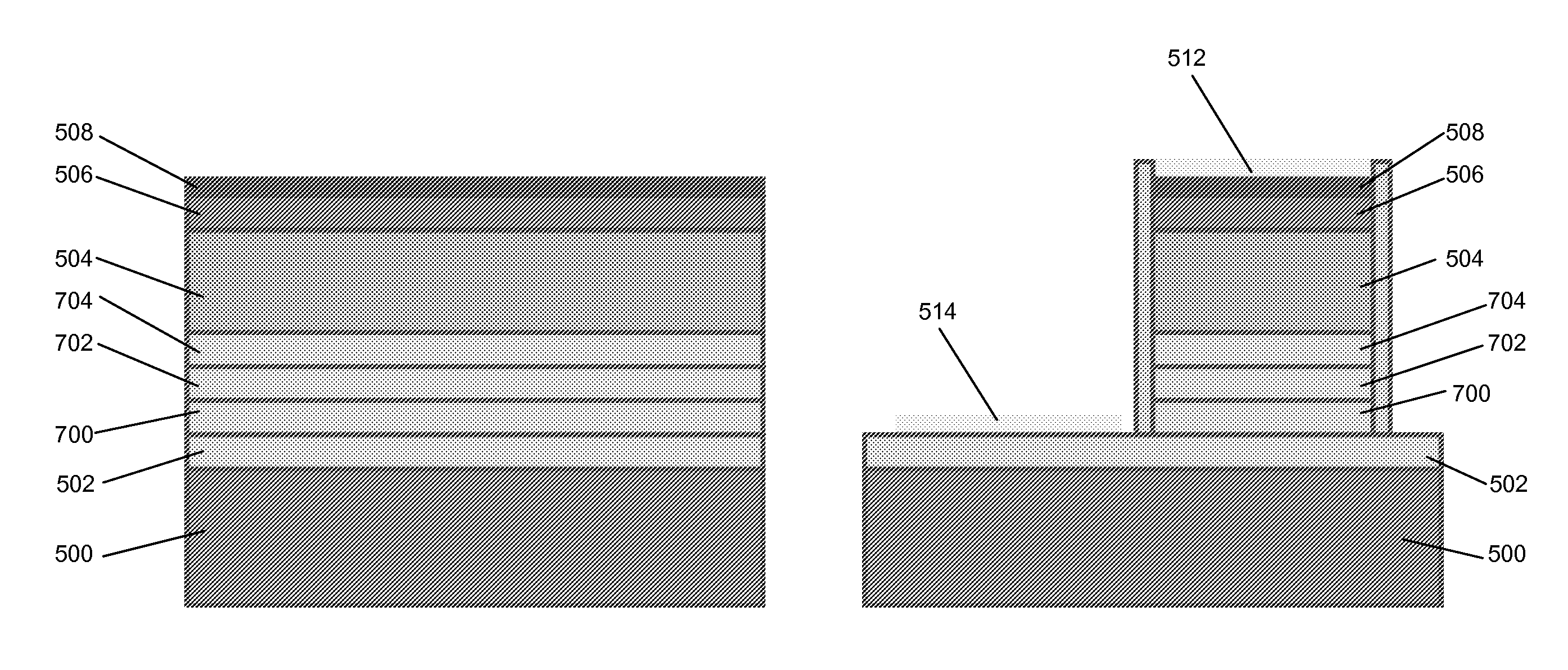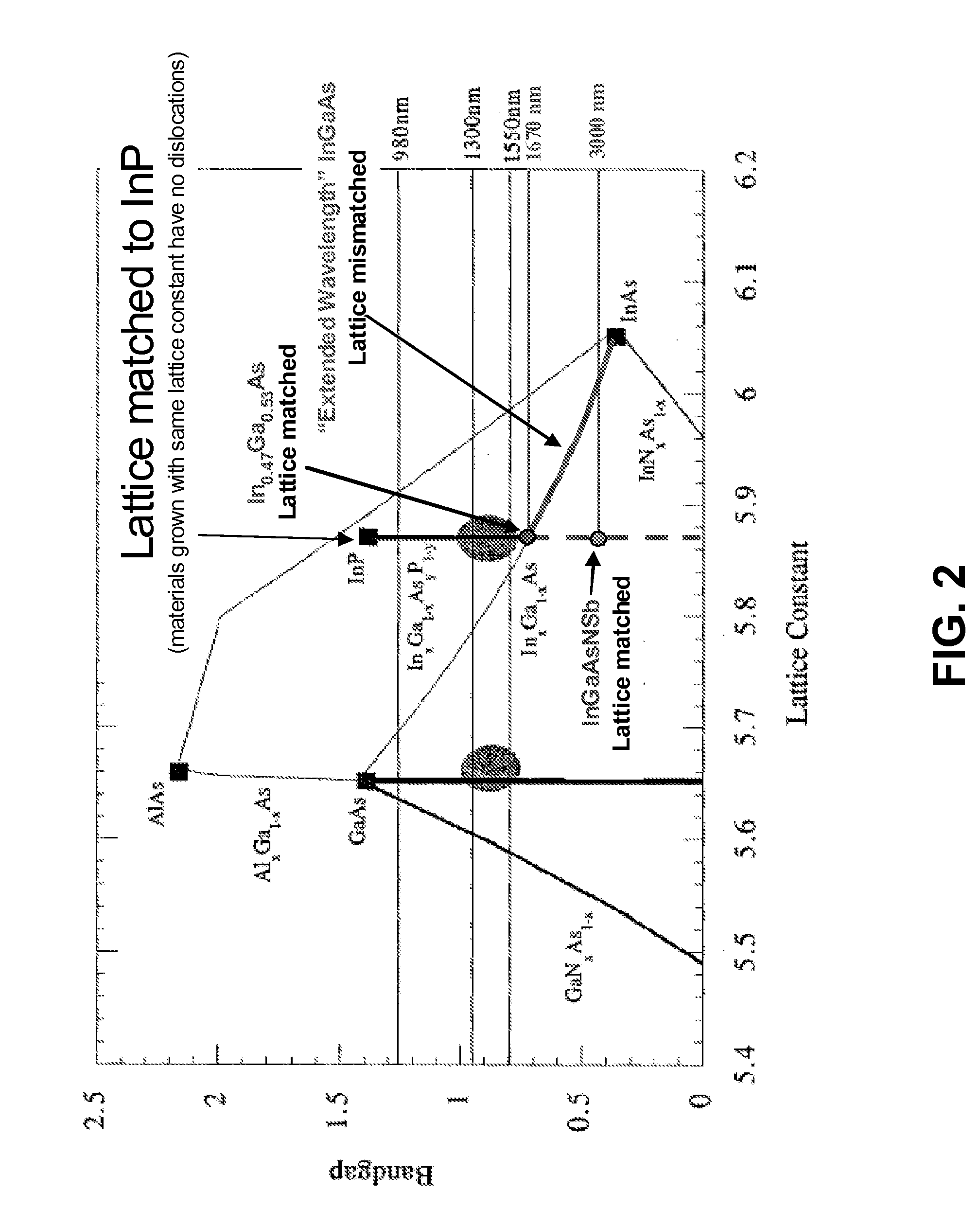InGaAsSbN PHOTODIODE ARRAYS
a technology of photodiode arrays and light detection, applied in the direction of basic electric elements, electrical equipment, semiconductor devices, etc., can solve the problems of increasing the dark current by several orders of magnitude, unable to be completely eliminated, and material exhibits poor photoluminescen
- Summary
- Abstract
- Description
- Claims
- Application Information
AI Technical Summary
Benefits of technology
Problems solved by technology
Method used
Image
Examples
Embodiment Construction
[0023]In the following description, reference is made to the accompanying drawings which form a part hereof, and which is shown, by way of illustration, several embodiments of the present invention. It is understood that other embodiments may be utilized and structural changes may be made without departing from the scope of the present invention.
[0024]A preferred embodiment of the invention is shown in FIG. 3. An n-type InP buffer layer 6 that is 1 micron is grown on an n-type InP substrate 5. A 3.5 micron thick layer of InGaAsSbN 7 is grown on top of the buffer layer 6. Layer 7 is grown with light n-doping. A 1 micron thick InP layer 8 is grown on top of the photoabsorbing layer 7. Depending on the application, a 0.2 micron layer of InGaAs 9 is grown on top of InP layer 8 to provide a low-resistance Ohmic contact.
[0025]By using a preferred combination of constituent atoms, the InxGa1-xAs1-y-zSbyNz can be grown with a cutoff wavelength beyond 3 micron and still remain lattice-matche...
PUM
| Property | Measurement | Unit |
|---|---|---|
| thickness | aaaaa | aaaaa |
| cutoff wavelength | aaaaa | aaaaa |
| cutoff wavelength | aaaaa | aaaaa |
Abstract
Description
Claims
Application Information
 Login to View More
Login to View More - R&D
- Intellectual Property
- Life Sciences
- Materials
- Tech Scout
- Unparalleled Data Quality
- Higher Quality Content
- 60% Fewer Hallucinations
Browse by: Latest US Patents, China's latest patents, Technical Efficacy Thesaurus, Application Domain, Technology Topic, Popular Technical Reports.
© 2025 PatSnap. All rights reserved.Legal|Privacy policy|Modern Slavery Act Transparency Statement|Sitemap|About US| Contact US: help@patsnap.com



